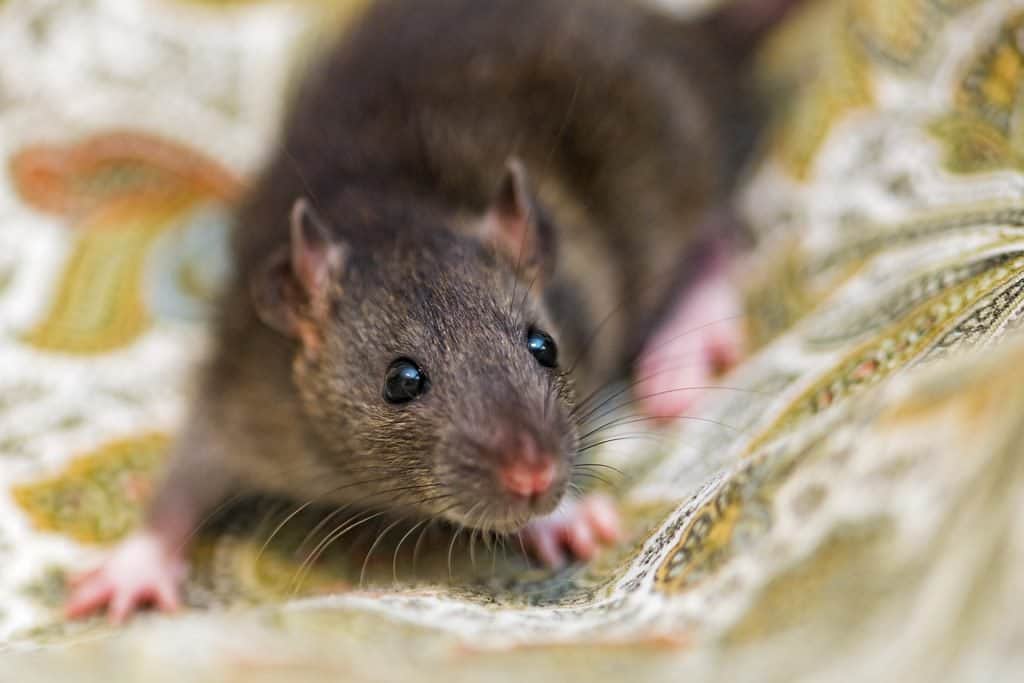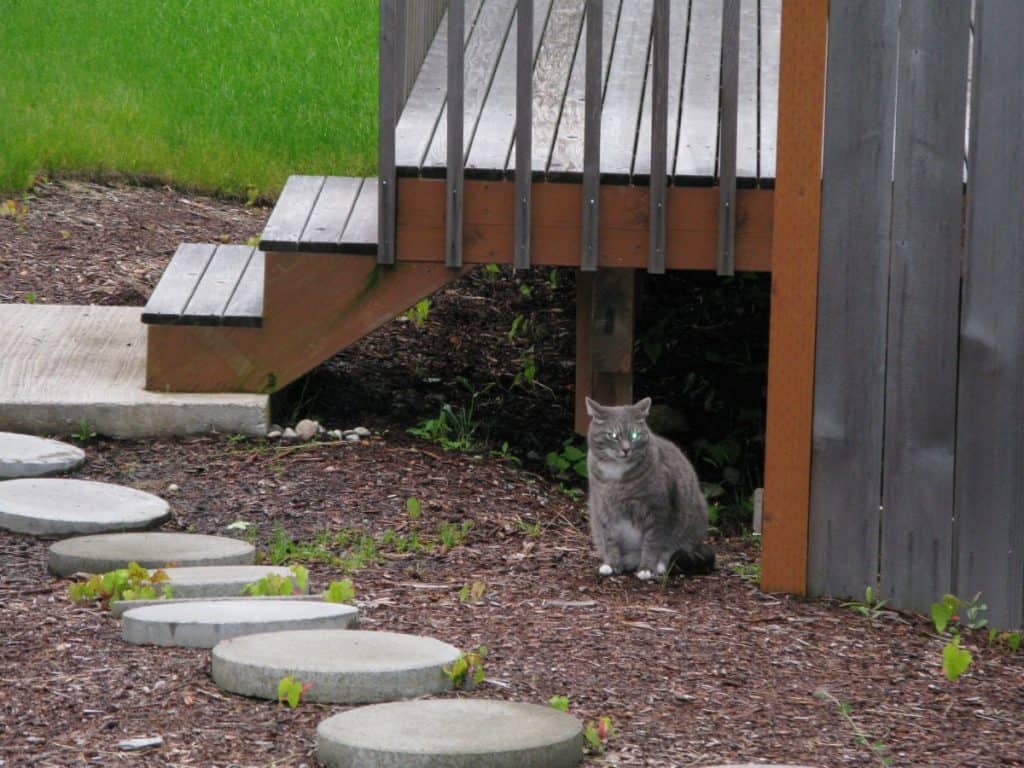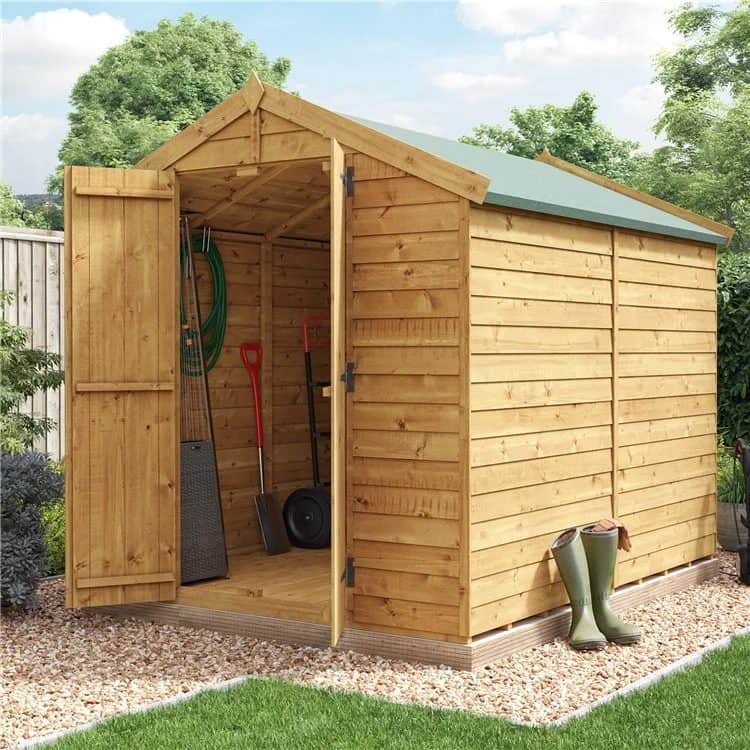Jump to:
Rodents are difficult pests to deal with and can evolve beyond a nuisance for your home and garden. Rats can also lead to health hazards.
Other than house basements, backyards are one of their targets. Rats can make under decking, a compost pile, or garden buildings their refuge. Not only that, but they can also destroy fence panels, invading your garden space. Hence why rat species are considered unwelcome visitors. If you want to know how to get rid of them, read to find out what signs to look for! In this post, we’ll also talk about preventive measures and the best ways to exterminate them.Things You Should Know About Rats
Rats need food, water and shelter to survive. You may spot their tunnels (6-9 cm in diameter) or their ‘runs’. This includes the tracks alongside walls, fences or buildings that are up to 10 cm wide.
You’ll also notice signs of rats through rat droppings, gnawed wood where food is stored, or parallel teeth marks in crops. Rats eat most root vegetables, including carrots, parsnips, beetroot, and potatoes. They also consume seeds and fruits. Thus, visible damage is likely to occur to crops. Their droppings may also be visible to where the damage has occurred, so make sure to keep an eye out for them. What’s more, rats have well-developed senses of smell, taste and touch. Their acute sense of hearing is also worth noting. They use pheromones and (ultrasonic) vocalisations to communicate. This also makes them particularly sensitive to any sudden noise. As for the appearance, rats can be easily spotted in the garden, especially during the day. But it would be more helpful if you were also aware of the two common types of rats in the UK.
1. Brown rats
Sometimes weighing over half a kilo and measuring around 23cm, the brown rat is the largest of the rats in the UK. Brown rats are considered omnivorous. They eat anything from fruit and seeds to human food waste.
Moreover, they are particularly common around towns and cities. Look out for their blunt muzzle, a tail that is shorter than its body and their small furry ears.
2. Black rats
Another type of rat species is common in the UK. Weighing around half as much and shorter than brown rats, black rats vary in colours from back to grey-brown.
They have large, hairless ears and a tail that’s longer than their body. Moreover, they’re skilled and agile climbers. They can run along with telephone wires and make their nests high up in the roofs. This is where they got their other name as ‘roof rats’.More about brown and black rats
Both species breed rapidly and become sexually mature in about three months. Each female may produce from three to twelve litters of between six and eight young in a year.
Gnawing also helps keep their constantly growing incisor teeth worn down. As a result, they often prey on woodwork, plastic, bricks and lead pipes. Stripping insulation from electrical cables is one of their targets as well. Brown rats live in any location that provides food, water, and shelter. In homes, they dwell in roof spaces, wall cavities or under floorboards. In gardens, they burrow into grassy banks or under sheds. They are also often found living in sewer systems. Whereas black rats live only within buildings, such as dockside warehouses. They occupy rocks and cliffs on islands. Look for nesting areas under rubbish, timber and drain pipes to spot them in your garden. Make sure to check under decking and inside your garden building too. Also, they normally come out at night to look for food resources. Thus, you won’t necessarily notice them in the daytime.Damage
Once rats start invading your home and garden, they can be very destructive. When it comes to health risks, they can spread serious diseases, such as Leptospirosis.
On top of that, they can also cause damage to the area in which they’re habiting. For instance, under your decking or inside your workshop. Moreover, rats eat wires and cause property destruction. This is due to their constantly growing teeth. By chewing on wires, they get rid of the pain, and they also keep their teeth in great shape. You’ll notice their presence through the noise they make at night.
How to Get Rid of Rats in Your Garden
Stopping rats without poison is easy, but only if you take the right prevention methods. Listed down below are the preventive measures you can start applying.
Note: If you are past this point and need effective action now, poison and traps are your best bet.

1. Keep your outdoor space tidy
If your garden is tidy, rats are less likely to take up home and stay there. Keep the grass cut short and clear cluttered storage areas. Remove rubbish, especially near fences and your shed or log cabin.
Minimising the overgrown areas of your garden also helps. Rats will have a hard time finding a spot to nest and hide. Plus, if your backyard is clean, you’re likely to spot them immediately.

2. Watch out for bird feeders
Bird feeders are great for encouraging wildlife into your garden. However, they also attract rats and mice. Chances are, they’ll climb up and overrun the feeding station to get bird food.
Use a squirrel-proof feeder as an alternative. It comes with a protective metal cage that blocks predators from chewing through.
If you suspect a rat’s nest in your garden, it’s best to stop using a bird feeder. Store bird and animal food in secure containers instead.

3. Block access to decking
In gaps below the garden decking, rats can easily find a home for these main reasons:
- It’s sheltered,
- Hard to get through (for humans),
- Food scraps are readily available through the gaps (especially if you dine on your deck often).
Sweep up any fallen food after BBQs and eat outdoors to stop them from invading your decking. If the problem persists, block access underneath the decking or consider installing a patio
4. Move things around
In order for rodents to not get too comfortable in your garden, move things around frequently. Also, keep in mind that they are neophobic, which means they have a fear of new things.
They don’t like disruption to their territory. Position obstacles in their runs and move your garden furniture around as much as possible.
5. Block access to garden buildings
Be sure to block any holes in the walls, floors, and doors of your garden buildings. Add a metal kick plate to your shed door to block their entryway. Metal Sheds themselves are especially good at keeping rats out as they’ll find it impossible to find a way through the material.
You may also want to keep your wooden sheds and greenhouses secured so they can’t get in the building easily. Fill any holes or cracks with wire mesh and metal to prevent rodents from entering.
Rodents also hate the smell of mothballs, peppermint, cayenne pepper, citronella and ammonia. Putting these smells nearby can help deter them.

6. Keep an eye on your crops
If you own a vegetable garden, rats will likely target and eat most of your crops. This includes sweet corn, pumpkins, squash and root vegetables. To prevent this from happening, store your harvest veggies somewhere secure once collected.
Note: If you suspect that your stored or growing crops have been nibbled by rodents, don’t eat them. Also, make sure seeds are stored in a sealed container.

7. Protect your compost bin
Your compost bin can also be targeted by rats. With that, make sure your bin or heap is inviting.
What you can do is to not add food scraps that include green and brown materials inside so the wastes remain moist.
Top tip: Put chicken wire underneath to prevent access. But if they have made a home in your bin, don’t use the compost on edible crops.

8. Pets as a deterrent
While it’s not advisable to get a pet purely for the purpose of catching rats, pets can be a good deterrent. Having a dog or cat could limit the risk of rats in your home or garden.
For one, they are a disruptive force which makes the rats less likely to stay.

9. Remove water sources
Unlike mice, rats can’t survive without water. If possible, remove any water sources from your garden, including dripping taps.
This way, they will lose their supply of water and are more likely to move somewhere else. Also, secure drain and add baffles to drainpipes.
Rat Control: Rat Traps IdeasConsider these for a higher chance of getting rid of the rats in your garden.
1. Spring/snap traps
Designed to kill rodents instantly with a spring release mechanism. Spring traps are triggered when the rodent steps into the trap or takes some food bait.
They can be dangerous if you have pets and children, especially when used outdoors. Place them on high-activity areas of the rat colony, such as:
- In the darkened corners of your garden or along walls
- Behind appliances
- All areas where droppings are evident
And since they need to touch surfaces as they move, place the traps accordingly from 15 to 20 feet apart.
2. Electrocution traps
This kind of trap discharges a high voltage shock when a rat walks on metal plates inside a containment box. They are an expensive method and not all can be used outdoors.
Note: Electrocution traps should be checked frequently for any dead animals.
3. Live capture traps
These are usually a small cage with a trigger mechanism to enclose the rodent when it pulls on the bait. They also need to be checked frequently to release any non-target animals caught.
4. Ultrasound devices
An alternative method used to disperse rats. Ultrasound devices emit sound at frequencies beyond the range of human hearing.
Rats and mice experience high volume ultrasound which can repel them without affecting humans.
Rats in the Garden: Round-up
Spending time in your garden should offer a relaxing experience – one which is beneficial to your health. So, you certainly don’t want it ruined by a rodent infestation!
There are a number of ways you can control rats, but we hope our guide will help you solve your rodent problems. For traps and poisons, you can buy them at any garden centres near you but make sure to use them properly!
You may also contact professional pest controllers to deal with rats effectively and immediately.










